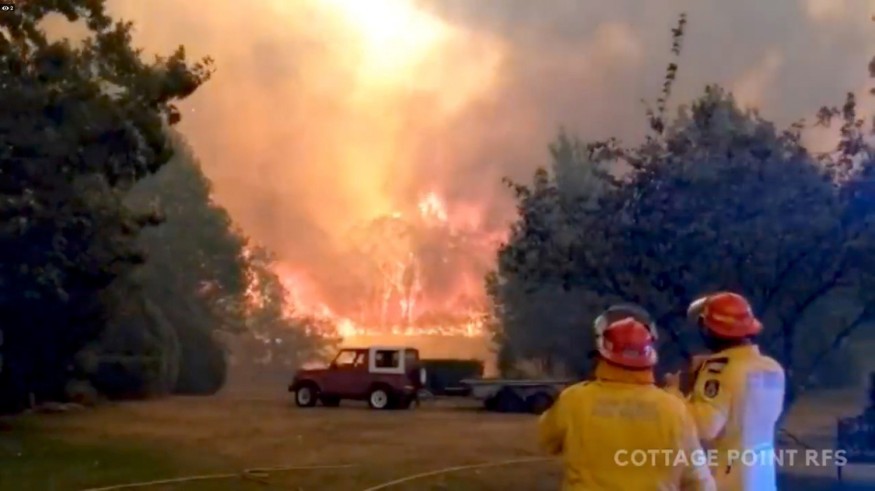
A new visualization from the Copernicus program in Europe has done precisely that, showing how wildfires have been worsening around the world.
The 92-second clip - which pulled together imagery and sensor readings from satellites - shows our world on fire during 2019, mapping the areas of the planet that lit up with wildfires over the last 12 months.
The seriousness of the problem becomes apparent as the clip develops. Several parts of the world barely get a rest from wildfire activity during 2019. As the season changes, other regions light up then go dark again.
"It has been [a hectic] year for CAMS regarding the monitoring of wildfires," says CAMS senior scientist Mark Parrington, noting that everyone needs to see the bigger picture to understand the scale of a problem.
According to Parrington, he and his team had been closely watching the intensity of the fires and the smoke they emit worldwide throughout the year and have experienced, at times, some quite unusual fire activity.
There have been various instances of unusually intense activity in specific regions worldwide, including places with regular fire seasons, which has been devastating, says Parrington. He noted that overall fire activities have been relatively average in the global sense for 2019, compared to previous years.
Wildfires hit the news headlines worldwide
The seasons saw wildfires across different regions of the world, with most continents attacked with flames at one point or another. Fires scattered vast amounts of ash and dust into the air, making it hazardous to breathe.
Agricultural negligence made the Amazon go up in flames for several months of the year, which peaked from June to August. Brazil's Jair Bolsonaro sent troops in the area to regain control of the situation.
The Pope, who is from the neighboring country Argentina, expressed his concern for the Amazon as it is essential for our Earth and offered prayers to stop the fire. The Papal remarked in his mass in St Peter's Square in August that 'almost everyone was worried' about the vast Amazon fires.
California frightened the locals and tourists in the summer as it was decimated by a blaze in June, with flame strikes causing several outbreaks until November.
Syria remained alight with their perished crops in October. Indonesia was plagued with fire in September, discharging a monstrous 708 megatons of carbon dioxide into the atmosphere.
Wildfires were seen in the Arctic, too - a hint of warming conditions in the coldest parts of Earth. The fires in the Copernicus video were shown as winter turns to summer in the Northern Hemisphere.
More than 100 wildfires have ignited the Arctic circle during 2019. The fire perished carbon reserves that then contribute to further warming of the atmosphere - releasing more greenhouse gases into the air while also reducing the number of trees and vegetation soaked up by the carbon dioxide.
A total of 6,375 megatons of carbon dioxide was estimated to be released into the atmosphere by wildfires across the globe this year.
© 2025 NatureWorldNews.com All rights reserved. Do not reproduce without permission.





